Rocky squelches through the rich black mud of Lamphelpat outside
Imphal, stopping occasionally to nibble on tufts of grass. All around,
herds of Manipuri ponies are gazing contentedly, the males casting
proprietary looks about the landscape as the mares nuzzle their
gamboling foals.
Seven-year-old Avinash is an expert bareback rider. Here he’s pictured on Bala, his favourite pony. (Photo by CK Sharma)
If you shut your eyes to the buildings looming at the edge of the
wetland, seeming to advance stealthily like an ugly concrete version of
Great Birnam wood in Macbeth, you can almost imagine how this valley
looked for centuries, when it was the preferred grazing ground for
thousands of Manipuri ponies.
“These semi-feral ponies have a unique genetic character. Unlike
other horses that cannot survive if they get wet, they can stand in
water up to their shoulders and continue to graze,” says journalist
Ningthoukhongjam Ibungochoubi, secretary of the Manipuri Pony Society.
Sadly, most of the ponies are now gone, driven almost to
extinction by untrammelled development in Imphal that has destroyed
meadows and reclaimed lakes. This has pushed the quadrupeds, one of only
five indigenous Indian horse varieties that include the Marwari, the
Kathiawari, the Zanskari and the Spiti, onto the streets, where they are
often run over, or worse, choke to death on plastic waste swallowed
while foraging in garbage dumps.
A loud rumble distracts the ponies from their sedate munching. A
gigantic truck has dumped yet another load of mud into Lamphelpat. The
Imphal campus of the National Institute of Technology (NIT) will soon
sprawl across this area. Other parts of the pat or lake have been marked
out for a range of projects including, it is rumoured, a baseball
field.
 At
a polo match on the Manipur Horse Riding & Polo Association’s farm,
the ponies and riders are in perfect sync. (Photos by CK Sharma)
At
a polo match on the Manipur Horse Riding & Polo Association’s farm,
the ponies and riders are in perfect sync. (Photos by CK Sharma)
This is absurd considering it’s at the cost of polo, the game that
first made Manipur internationally famous and is as dear to many Meiteis
— the majority ethnic group in the state — as gully cricket is to the
rest of India. Indeed, Imphal has Mapal Kangjeibung, the oldest living
polo ground in the world, and polo clubs abound in the state where the
game isn’t the preserve of the upper class.
Everywhere, a sport’s popularity can be gauged by the enthusiasm of
children. Children here can often be seen riding ponies down the less
busy streets and leading them through their paces. The sight of tiny
Avinash (7), expertly riding his favourite pony Bala bareback across the
rolling grasslands that are part of the Manipur Horse Riding & Polo
Association’s breeding farm, is especially wonderful. “Riding is part
of our way of life, our culture. Sometimes kids even ride ponies naked,”
laughs Joyremba Haobam, Managing Director of CubeTen, a software
company in Imphal, as we watch a polo march.
Riders and ponies are equally intent on the game as they charge
around the field, grunting, yelling, mallets thwacking the ball. There’s
much daredevilry on display as human and animal synchronize perfectly.
Later, the feeling that you’ve stepped into a magical place — part
Mongolian steppe, part Vaishnavite homeland — intensifies when a
rosy-cheeked girl on a gray pony charges past on the main street.
Most of the time, though, Manipur calls to mind human tragedy, the
excesses of AFSPA, Irom Sharmila’s brave struggle, the women who
stripped naked to protest the brutal killing of Manorema. The rest of
the country knows about these tragedies but few are aware of the slow
choking of the state’s environment.
“Lamphelpat’s peaty soil is made up of the decaying matter of plants
and organisms. It has taken thousands of years to evolve but due to our
carelessness, it is going to vanish,” says wetland ecologist S Shyamjai
Singh, who explains that the lake absorbs the city’s pollutants and
keeps the weather moderate.
His colleague Bidan Singh, Secretary of the Manipur Wetland Society,
points out that the death of Lamphelpat will wreak havoc on Imphal. “In
the early monsoon, the water drains to the Samushang channel, which
connects to the Nambul river. At the onset of the monsoon, the excess
water from the river gets stored in Lamphelpat. It is a natural flood
control system,” says Singh, who once spent four weeks pursuing his
research in a hut on a floating bit of biomass on Loktak lake, the
largest freshwater lake in the north-east. Reckless reclamation has
blocked both the free flow of water and its storage. “If Lamphelpat is
filled up, the whole city of Imphal will be flooded. It’s already
happening,” he says. “The role of a wetland is to be a kidney, a sponge.
The government is spending crores every year to mitigate the flood. If
they just preserved Lamphelpat, it would solve the problem,” he says.

It isn’t just scientists who are worried. “If we don’t save
Lamphelpat, even the remaining ponies will vanish,” says Momon Singh, a
former jockey who reveals that when a project threatened Vijay Mallya’s
stud farm in Karnataka, the tycoon had ensured that plans were changed.
Unfortunately, the Manipuri pony doesn’t have a powerful benefactor like
Mallya and the breed’s extinction seems imminent. A pony census shows
that while there were 1893 ponies in 2003, the number fell to 1218 in
2007. “We’ve done an unofficial count before the census is conducted
later this year and now there are only about 400 ponies left,” says
Ibungochoubi.
To its credit, the state government is trying to provide a sanctuary
near the temple to Lord Marjing, a Meitei deity. “Most Manipuris became
Vaishnavite Hindus around the 14th century. Before that, we followed
Sanamahism. With Vaishnavism, we continued to worship our old gods like
Iboudhou Marjing, who is believed to be the inventor of polo,” says
Ibungochoubi as we trudge up the steps to the temple. At the top, is a
beautiful idol of Marjing, lord of prosperity, good health and virility,
seated majestically on Samadon, a sweet faced Manipuri pony. Alongside
the idol are marble ponies rearing up on their hind legs. Devotees
bearing vivid purple water lilies from the Heingang lake nearby kneel
down and lose themselves in prayer. The experience is strangely moving
and leaves you feeling grateful for glimpsing other ways of knowing, of
believing, of being.
“In our traditional belief, Ibudhou Marjing was a master horseman and
his horse could fly. So the pony is an integral component of our
civilisation,” says Ibungochoubi adding that Meitie horsemanship had
ensured that Manipur stayed independent through the ages. “Polo — the
modern form originated in Manipur — is sometimes called a peacetime war
exercise. Our history shows that some games had 200 people on horseback
on each side,” he says. “Polo players from all over the world dream of
playing here on the original pony, which is the Manipuri pony. For them,
coming to Manipur is like a pilgrimage!”
If the number of ponies continues to dwindle, though, it’s a
pilgrimage that could be discontinued. “According to international
norms, if any breed is fewer than 2,000 in number, it is considered
endangered and if the number of fertile females is fewer than 300, it is
considered critically endangered. The Manipuri pony is actually
critically endangered,” says Ibungochoubi, who hopes the central
government will step in to save the breed and preserve its grazing
grounds.
Back at Lamphelpat, polo player Romen Singh, fondly watches a foal
ambling down a dirt track.
“Khambaton!” he calls. In response, the
little pony canters up excitedly. “His mother died after he was born so
we bottle fed him,” Romen says as he holds out two sugared loaves.
Khambaton demolishes both before rejoining his brother, a magnificent
older chestnut. It’s a heartwarming scene that reveals much about the
close relationship between many Manipuris and these hardy ponies.
As still another truck dumps its load into the lake, you wonder if
Rocky and Khambaton and the rest of the herd will survive the
destruction of this grassland, whether they will end up as road kill.
You wonder if Manipur too will succumb to the excesses of development
that are diminishing lives in other parts of India; if it will let go of
all it holds dear, its unique culture and its unusual relationship with
its ponies for the evanescent pleasures of ‘modern’ life.
You can only hope that Iboudhou Marjing will show the way.








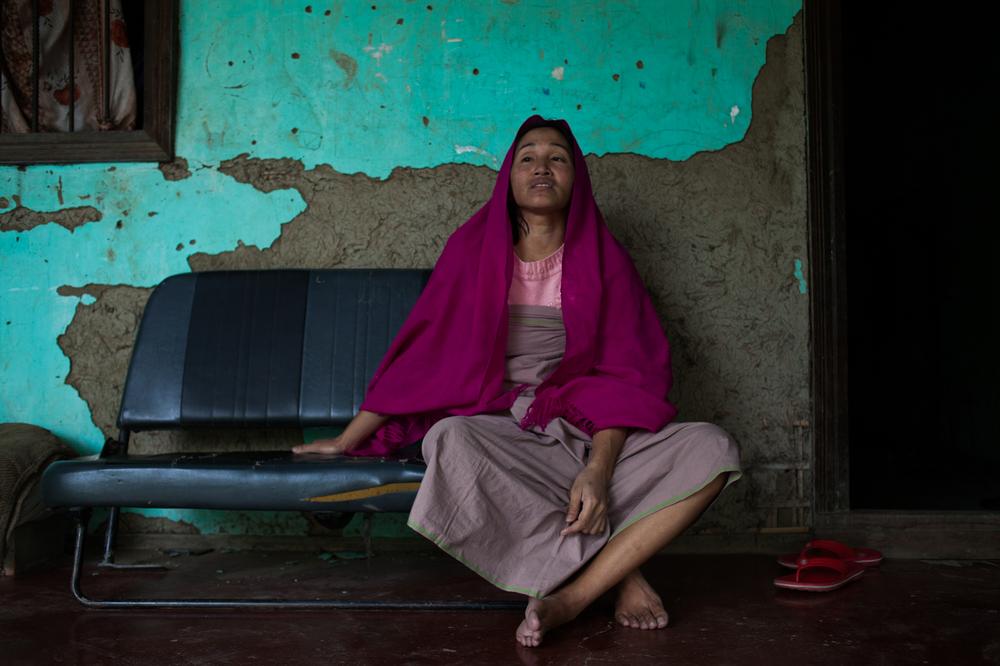 Gangarani
Kongkhang, 38, is a visually-impaired woman whose husband Deban
Kongkhang was killed after a hail of bullets were fired into the van he
was driving, allegedly by the Thoubal District Police Commandos at
Patpan Lamkhai in Imphal. The government vowed to punish the
perpetrators. She was promised a government job and financial
compensation but six years later she has received nothing. She lives on
handouts and takes care of her two children aged seven and 12.
Gangarani
Kongkhang, 38, is a visually-impaired woman whose husband Deban
Kongkhang was killed after a hail of bullets were fired into the van he
was driving, allegedly by the Thoubal District Police Commandos at
Patpan Lamkhai in Imphal. The government vowed to punish the
perpetrators. She was promised a government job and financial
compensation but six years later she has received nothing. She lives on
handouts and takes care of her two children aged seven and 12.
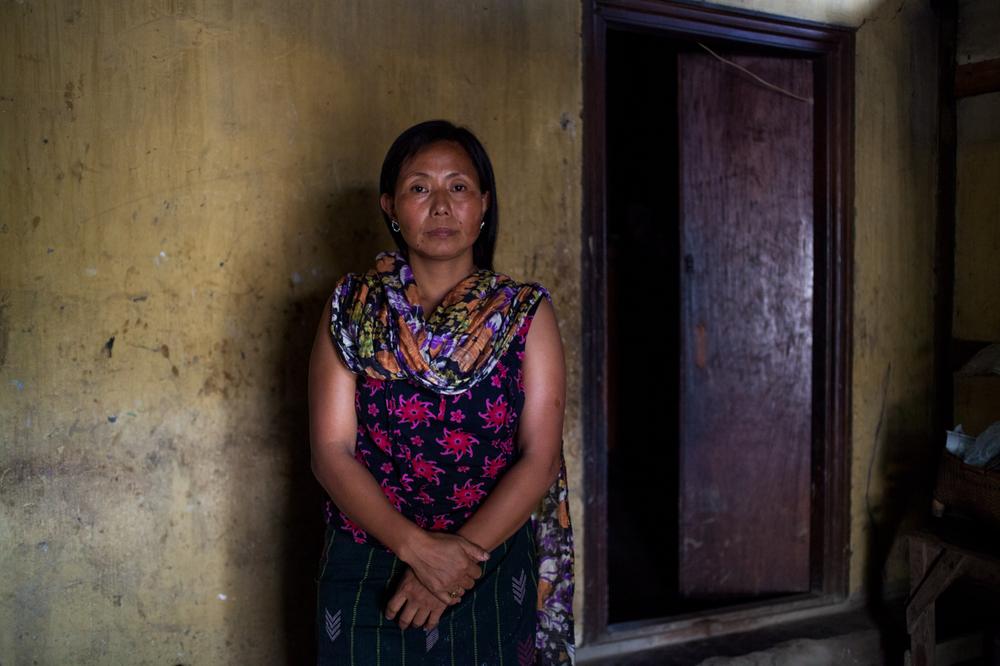 Wangkhem
Chandrakala's husband, Namoijan Lukhoi, was shot by two unidentified
men outside their home on April 21, 2008. She filed a police complaint
but gave up the case because she feared repercussions and worries about
the safety of her four school-going children. "Soon after my husband's
death, I went into depression and began to lose my senses. I would
wander off and find myself in the fields or in the crematorium. My
family members and neighbours had to keep an eye on me," she told Al
Jazeera.
Wangkhem
Chandrakala's husband, Namoijan Lukhoi, was shot by two unidentified
men outside their home on April 21, 2008. She filed a police complaint
but gave up the case because she feared repercussions and worries about
the safety of her four school-going children. "Soon after my husband's
death, I went into depression and began to lose my senses. I would
wander off and find myself in the fields or in the crematorium. My
family members and neighbours had to keep an eye on me," she told Al
Jazeera.
 Irom
Sharmila Chanu, known as "The Iron Lady of Manipur" has been on a
protest fast for last 14 years demanding the repeal of the Armed Forces
Special Powers Act. Here she is pictured in her Security Ward at the
Jawaharlal Nehru Institute of Medical Sciences in Imphal. She was
released on Wednesday.
Irom
Sharmila Chanu, known as "The Iron Lady of Manipur" has been on a
protest fast for last 14 years demanding the repeal of the Armed Forces
Special Powers Act. Here she is pictured in her Security Ward at the
Jawaharlal Nehru Institute of Medical Sciences in Imphal. She was
released on Wednesday.
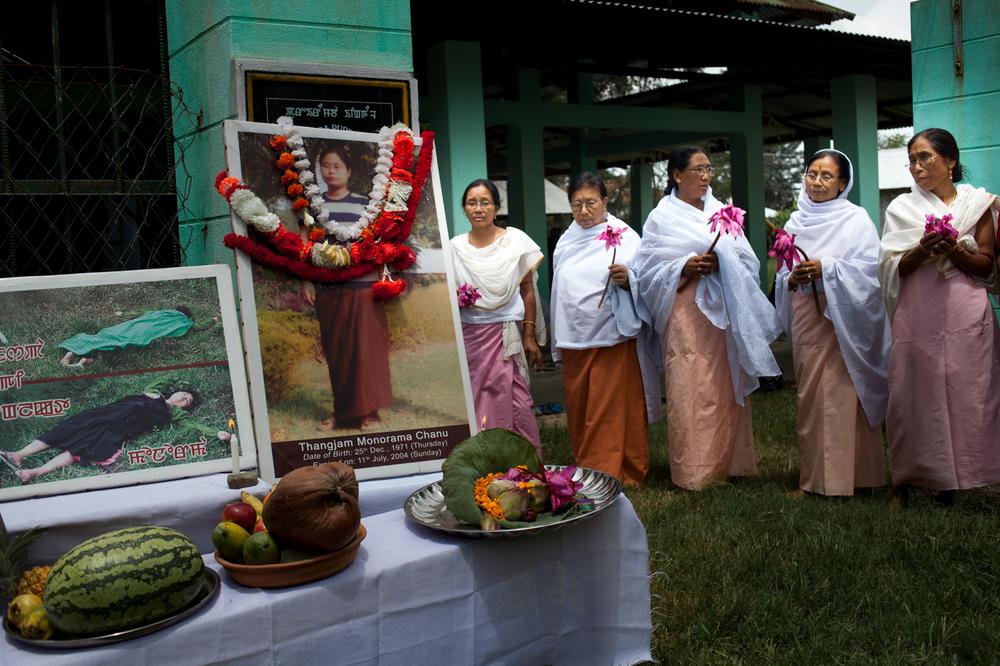 Family
members and local activists attend the memorial service held on the
tenth anniversary of Thangjam Manorama's death on July 10 at Bamon Kampu
Mayai Lekai in Imphal. Manorama was picked up on July 9, 2004 by the
17th Assam Rifles. She was found raped and murdered with bullet wounds
on her genitalia the next day near her home in Ngariyan Maring. Her
death sparked widespread protests in Manipur and other parts of India.
Family
members and local activists attend the memorial service held on the
tenth anniversary of Thangjam Manorama's death on July 10 at Bamon Kampu
Mayai Lekai in Imphal. Manorama was picked up on July 9, 2004 by the
17th Assam Rifles. She was found raped and murdered with bullet wounds
on her genitalia the next day near her home in Ngariyan Maring. Her
death sparked widespread protests in Manipur and other parts of India.
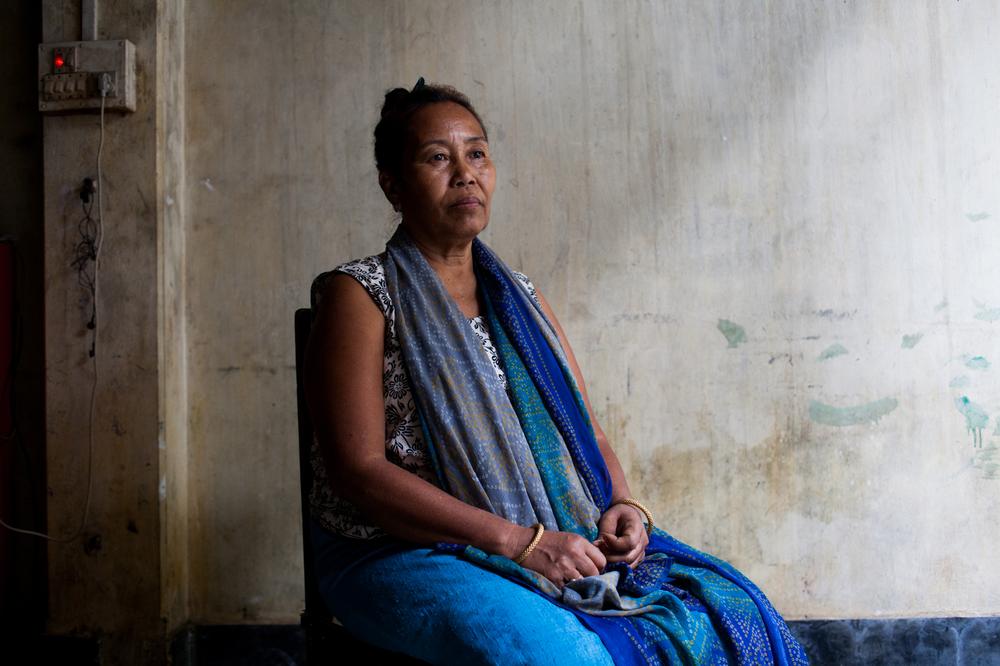 Khumbongmayum
Lata Devi's 20-year-old son Khumbongmayum Orsonjit Singh was killed by
the Manipur Police Commandos on March 16, 2010. His is one of the cases
concluded to be a fake encounter by a commission appointed by the
Supreme Court.
Khumbongmayum
Lata Devi's 20-year-old son Khumbongmayum Orsonjit Singh was killed by
the Manipur Police Commandos on March 16, 2010. His is one of the cases
concluded to be a fake encounter by a commission appointed by the
Supreme Court.
 Irom
Sharmila waits in her ambulance on July 7 as armed guards stand by
outside the Appellate Court in Lamphel. She began her fast on November
2, 2000 when 10 civilians were killed at a bus stop by the Assam Rifles
in the Malom district near Imphal airport.
Irom
Sharmila waits in her ambulance on July 7 as armed guards stand by
outside the Appellate Court in Lamphel. She began her fast on November
2, 2000 when 10 civilians were killed at a bus stop by the Assam Rifles
in the Malom district near Imphal airport.
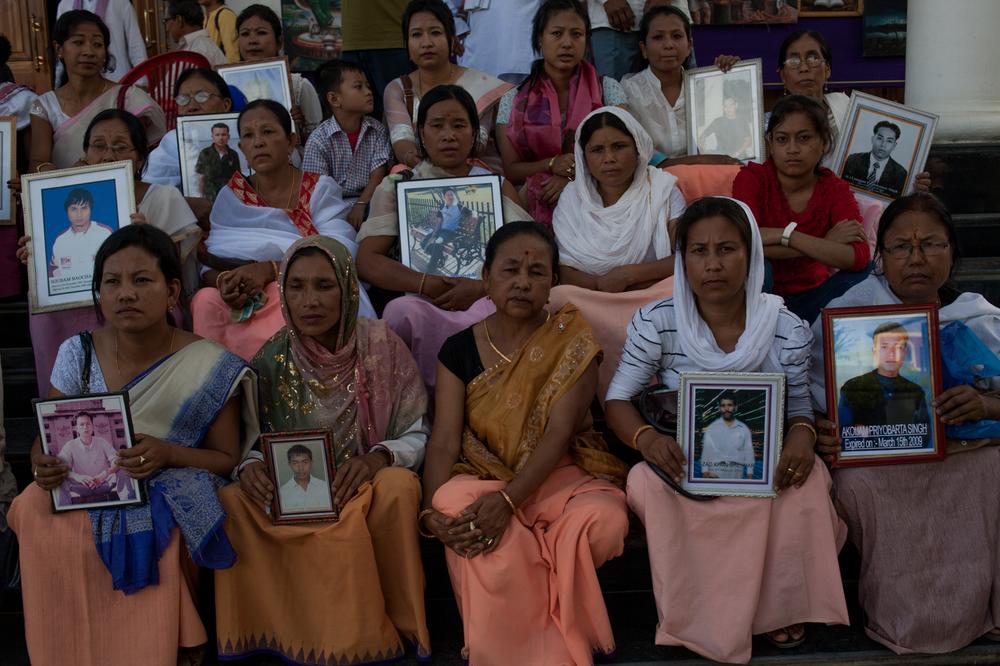 Women
who are part of the Extrajudicial Execution Victims Families
Association of Manipur (EEVFAM) pose for a photograph with portraits of
family members who were killed by armed forces on the fifth anniversary
of EEVFAM in Imphal. EEVFAM provides support and counsels families in
dealing with the loss of their husbands and sons and in dealing with the
stigma of their family members being labeled as underground rebels.
Women
who are part of the Extrajudicial Execution Victims Families
Association of Manipur (EEVFAM) pose for a photograph with portraits of
family members who were killed by armed forces on the fifth anniversary
of EEVFAM in Imphal. EEVFAM provides support and counsels families in
dealing with the loss of their husbands and sons and in dealing with the
stigma of their family members being labeled as underground rebels.
 On
January 24, 2009, Soraishem Joy, 40, was picked up from his home by
Assam Rifles soldiers and was blindfolded and beaten in an open field
and waterboarded at their camp in Patsoi, near Imphal. He was forced to
sign a blank piece of paper and was later thrown in jail for six days
after which he was released because villagers protested and pleaded his
innocence. "If it wasn't for my neighbours and family support, I would
have been a dead body like all those other fake encounter cases. I have
done nothing wrong," he says.
On
January 24, 2009, Soraishem Joy, 40, was picked up from his home by
Assam Rifles soldiers and was blindfolded and beaten in an open field
and waterboarded at their camp in Patsoi, near Imphal. He was forced to
sign a blank piece of paper and was later thrown in jail for six days
after which he was released because villagers protested and pleaded his
innocence. "If it wasn't for my neighbours and family support, I would
have been a dead body like all those other fake encounter cases. I have
done nothing wrong," he says.
 Flowers are placed in front of portraits of men who were victims of extrajudicial killings.
Flowers are placed in front of portraits of men who were victims of extrajudicial killings.
 RK
Surjalata Singh, 50, lost her 26-year-old son Irengbam Roshan on May 8,
2012. He was allegedly shot by the Assam Rifles in the Ukhrul district
in Manipur. Surjalata remembers her son's body at the morgue as having
burn marks from scalding water and bullet wounds suggesting torture
methods were used. Surjalata's younger brother, RK Khogen was also
killed in the 1995 RIMS (Regional Institute of Medical Sciences)
massacre in Imphal when security forces opened fire, killing nine
civilians.
RK
Surjalata Singh, 50, lost her 26-year-old son Irengbam Roshan on May 8,
2012. He was allegedly shot by the Assam Rifles in the Ukhrul district
in Manipur. Surjalata remembers her son's body at the morgue as having
burn marks from scalding water and bullet wounds suggesting torture
methods were used. Surjalata's younger brother, RK Khogen was also
killed in the 1995 RIMS (Regional Institute of Medical Sciences)
massacre in Imphal when security forces opened fire, killing nine
civilians.
 Neena
Ningombam, 33, lost her husband Michael Nongmaithem in 2008. Michael
was accused by the police of being a rebel and was allegedly shot for
trying to escape. After her husband's death, she joined other widows
whose husbands were killed by the Indian Army and started a campaign
against army atrocity. She has two sons, aged six and 12.
Neena
Ningombam, 33, lost her husband Michael Nongmaithem in 2008. Michael
was accused by the police of being a rebel and was allegedly shot for
trying to escape. After her husband's death, she joined other widows
whose husbands were killed by the Indian Army and started a campaign
against army atrocity. She has two sons, aged six and 12.
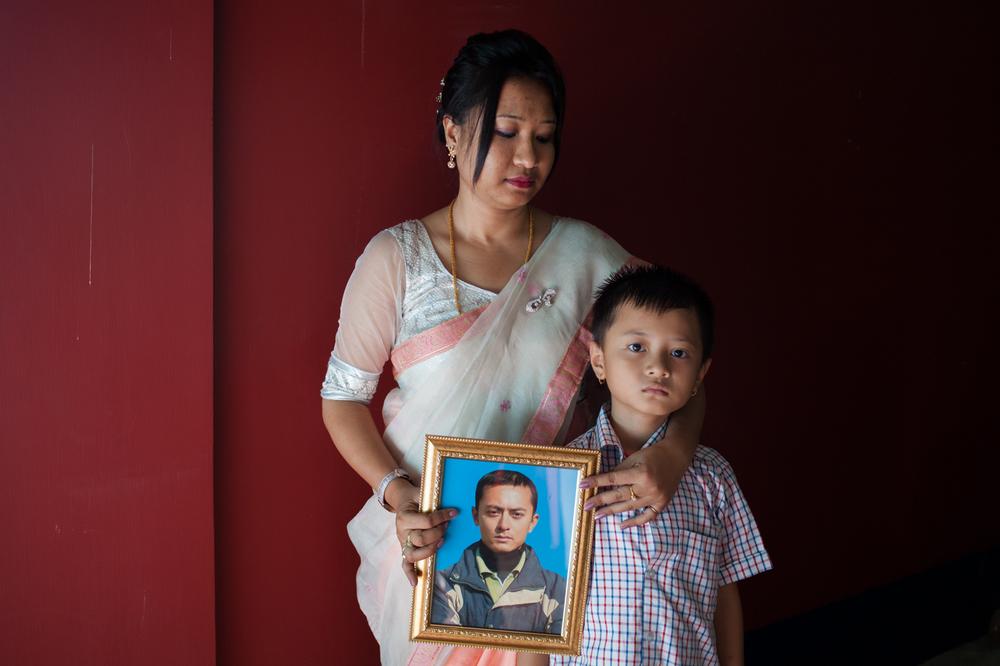 Roni,
30, with her nine-year-old son Mutum Mir. Her husband Mutum Herojit,
38, was killed in an encounter on October 13, 2008. "I want justice for
my husband. No other woman's husband should die in the future. I want to
tell the government that this killing should stop or else Manipur will
become a state of widows," she told Al Jazeera.
Roni,
30, with her nine-year-old son Mutum Mir. Her husband Mutum Herojit,
38, was killed in an encounter on October 13, 2008. "I want justice for
my husband. No other woman's husband should die in the future. I want to
tell the government that this killing should stop or else Manipur will
become a state of widows," she told Al Jazeera.


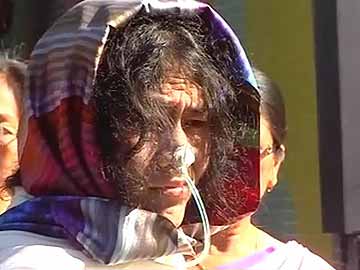












 Hunting of frogs is a serious threat to the ecosystem. Feeding on pests, frogs are natural pest controller.
Hunting of frogs is a serious threat to the ecosystem. Feeding on pests, frogs are natural pest controller. 

